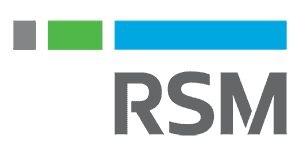
How Banks Can Implement 3 Types of Automation Solutions
Brought to you by RSM US LLP

Many banks struggle with digital transformation, often because they lack an effective strategy, clear governance over the transformation process or both.
Common and current inefficiencies include relying on manual reports created in spreadsheets across multiple systems, using email or word processing to capture and document approvals and serve as a system of record and inconsistent procedures across business functions.
A digital-first approach has increasingly become table stakes for financial institutions given consumer adoption. In 2021, 88% of U.S. consumers used a fintech, up from 58% in 2020, according to an annual report from Plaid. Customers expect a frictionless experience from their bank; traditional institutions need to have a plan in place to adapt accordingly.
Banks that don’t already have a digital transformation strategy need to establish one to anchor and govern their process for evaluating, prioritizing and executing digital transformation projects. One area for consideration on that digital journey should be automation, which can help organizations become more efficient and better mitigate a variety of risks. There are three intelligent automation solutions that can help banks reduce costs and improve productivity, among other benefits: robotic process automation, digital process automation and intelligent document processing.
- Robotic process automation: In general, RPA is task-based automation focused on accomplishing targeted components of business processes without the need for significant human intervention. RPA is capable of handling high volume, repetitive and manual tasks on behalf of human process owners, filling gaps where systems lack integration capabilities.
- Digital process automation: This type of automation focuses on optimizing workflows to orchestrate more collaborative work processes. DPA typically involves highly auditable data flows to improve regulatory compliance, and is scalable in a way that helps the organization adapt to evolving business needs.
- Intelligent document processing: IDP automation involves the extraction of semi-structured data from digital documents such as PDFs and image files. This transforms such documents into discrete data elements that can drive decision-making. IDP can enhance the scope of RPA and DPA solutions.
Questions to Ask
On a foundational level, banks need to have a clear, intentional link between technology spending and their overall business strategy if they want to succeed in their digital journey. Leadership teams need to understand issues with current processes to ascertain where streamlining those processes could offer the greatest return on investment. Here are some key questions to consider when evaluating process automation:
- How does the automation solution reduce friction and improve the customer or user experience?
- What is the associated market opportunity or efficiency gain enabled by the solution?
- Is the institution potentially automating a bad process?
- How does the solution align with what customers want?
- How will the institution train its teams to ensure adoption?
- How does the automation solution fit into the organization’s current processes, workflows and culture?
- How will the bank manage the change and govern post-transformation?
Developing a Framework
Depending on where a bank is in its digital transformation journey, there are a variety of steps the organization will need to take to implement automation solutions. Those banks that are early in their journey can use the following steps to help:
- Plan: Establish a framework for implementation, including objectives, teams, timelines and a project governance structure.
- Assess: Understand the current state of functions across the business and identify process gaps where automation can help.
- Design: Use best practices to establish a “fit for purpose” system design that meets business requirements and is scalable for future growth.
- Execute: Configure the applications and integrations according to system design; validate, test and resolve any defects identified; migrate the approved configuration to the production environment.
- Go live: Assess user readiness and deploy the solution.
- Support: Execute an automation support strategy and establish an external support framework.
- Monitoring: Establish and track key performance indicators to provide metrics for better visibility into the business.
- Road map: Evaluate business unit usage and develop a plan for optimization and expansion to realize the company’s digital transformation vision and business goals.
Addressing each of these steps can help banking leadership teams develop a more thoughtful approach to automation solutions and improve their overall digital transformation strategy.

